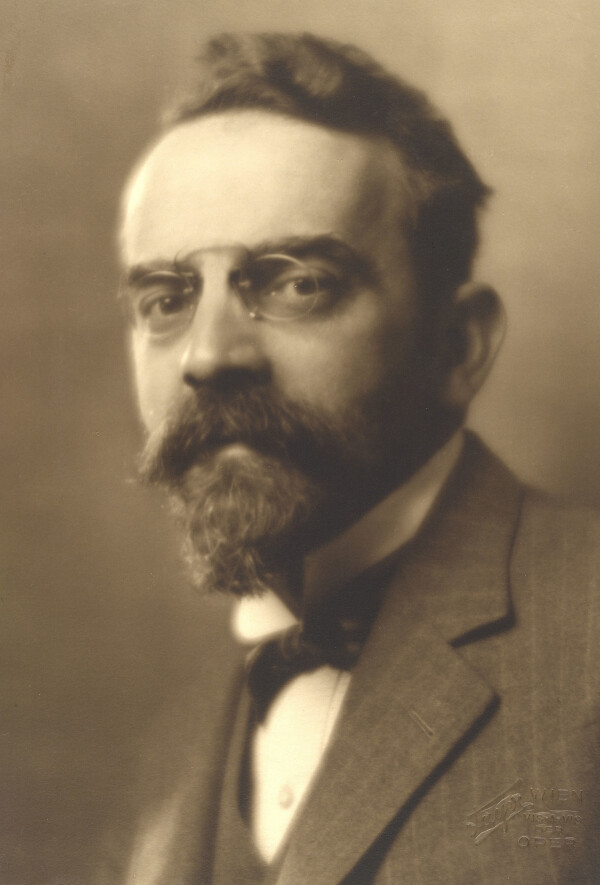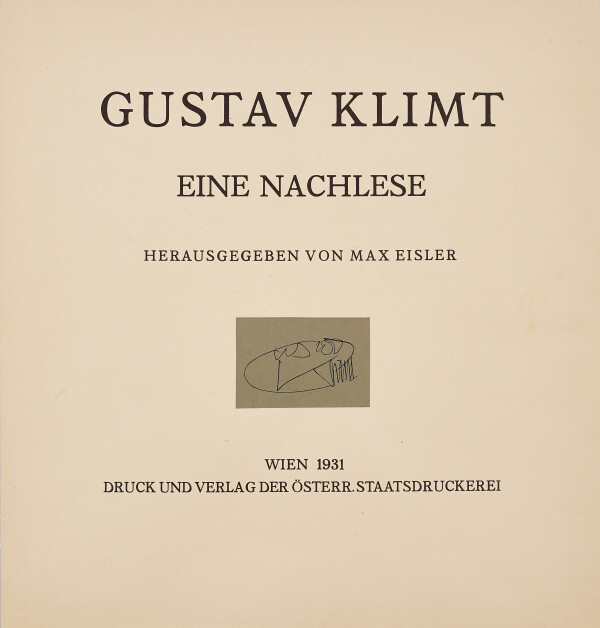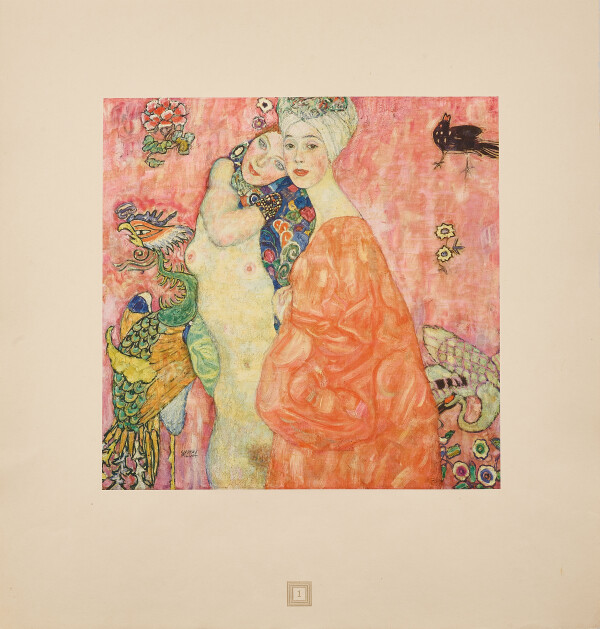Max Eisler

Max Eisler photographed by Georg Fayer, 1927, Austrian National Library, Vienna
© Picture Archives and Graphics Department, Austrian National Library

Title page, in: Max Eisler (Hg.): Gustav Klimt. Eine Nachlese, Vienna 1931.
© Klimt Foundation, Vienna

Gustav Klimt: The Friends II, in: Max Eisler (Hg.): Gustav Klimt. Eine Nachlese, Vienna 1931.
© Klimt Foundation, Vienna
As an art historian, Eisler was interested in modern art and contemporary arts and crafts in Vienna and the Netherlands. With his monograph on Gustav Klimt and the portfolio Gustav Klimt: Eine Nachlese, he supported the artist even after Klimt’s death.
Max Eisler was born as the son of a Jewish merchant in Boskowitz in Moravia (now Boscovice, Czech Republic) in 1881. He studied in Vienna, Leyden and Utrecht and qualified as a professor at the University of Vienna in 1914, where he taught recent art history as an associate professor from 1919.
Initially, Eisler’s early work centered on the style of the Dutch and Flemish Old Masters. He gave many lectures on the topic and his first important artist monograph dealt with Rembrandt. As an art critic he wrote for publications such as Die Tagespresse and the Jewish magazine Das Zelt, which discussed art, literature and science.
Austrian Werkbund
Together with Gustav Klimt, Franz Barwig, Anton Hanak, Dagobert Peche, Oskar Strnad and others, Eisler was among the founding members of the Austrian Werkbund in 1913. He went on to write monographs about most of his Werkbund colleagues. He also received a commission from the association for the book Österreichische Werkkultur, published in 1916, a manifesto about the work of the Austrian Werkbund to which Eisler contributed the texts.
Artist Monographs and Portfolios
In the following years, Eisler focused increasingly on art in his hometown of Vienna. In addition to his works on historic city views of Vienna, he also explored Vienna’s important modern artists. In the 1920s, he published biographies of his Werkbund colleagues Anton Hanak, Oskar Strnad and Otto Prutscher and also studied the works of Gustav Klimt.
Eisler published the first monograph on Klimt, simply titled Gustav Klimt, only two years after the artist’s death. In keeping with his training as an art historian, Eisler structured the work along stylistic periods in Klimt’s oeuvre. His declared intention was to give a retrospective overview of the entire work of the exceptional artist, an effort that had not yet been made. Since the monograph was published shortly after the artist’s death and because of Eisler’s personal acquaintance with Klimt, the work represents an especially valuable testimony to Eisler’s famous contemporary. Its descriptions of the colors of the paintings in the Lederer Collection, in particular, which were destroyed by fire in 1945 and which are known to posterity only through black-and-white reproductions, provide an important basis for current research.
In 1931, Eisler presented the portfolio Gustav Klimt: Eine Nachlese, which contained reproductions of well-known paintings by the artist. It was published in a limited edition of 500 copies and in several languages. With a total of 30 collotype prints – 15 of them colored – the portfolio, which was executed by the Austrian state printing house Österreichische Staatsdruckerei, is an example of high quality and technical expertise in the field of reproductions.
In the last years of his life, Eisler dedicated much of his time to Jewish culture. He gave numerous lectures on Judaism, Israel and Jewish art. Max Eisler died from a heart attack in Vienna on 8 December 1937 and was thus spared the horror of witnessing the “Anschluss” in 1938.
Literature and sources
- Wien Geschichte Wiki. Historischer Atlas. www.geschichtewiki.wien.gv.at/Historischer_Atlas_des_Wiener_Stadtbildes_(Max_Eisler) (04/15/2020).
- Wien Geschichte Wiki. Max Eisler. www.geschichtewiki.wien.gv.at/Max_Eisler_(Kunsthistoriker) (04/15/2020).
- Österreichisches Biographisches Lexikon. Max Eisler. www.biographien.ac.at/oebl/oebl_E/Eisler_Max_1881_1937.xml (04/15/2020).
- Isabella Gartner: Menorah: Jüdisches Familienblatt für Wissenschaft, Kunst und Literatur (1923 – 1932). Materialien zur Geschichte einer Wiener zionistischen Zeitschrift, Würzburg 2009, S. 45.
- Evelyn Adunka: Max Eisler. Wiener Kunsthistoriker und Publizist, Leipzig 2018.
- Max Eisler: Österreichische Werkkultur, Vienna 1916.
- Neue Freie Presse, 02.09.1911, S. 5.
- Der Tag, 09.12.1937, S. 5.
- Die Wahrheit, 10.12.1937, S. 6.

